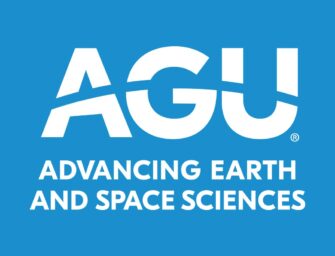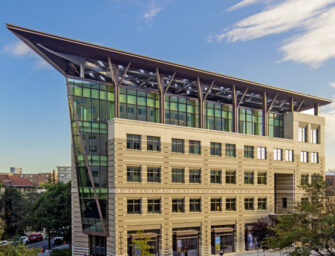Creating, and Navigating, the Virtual Fall Meeting
By Guy Brasseur, Sabine Stanley, Brooks Hanson, Lauren Parr and Nicole Oliphant
AGU Fall Meeting is around the corner. There are a lot of first time as well as “seasoned” attendees who are all integral to a successful #AGU20. No matter one’s level of experience at previous Fall Meetings, a 100% virtual meeting is new for us all.
The AGU Fall Meeting and other AGU meetings were already moving to expand virtual capabilities and experiences, including expanding engagement worldwide with a goal of a lower carbon footprint. No one said it would be easy to make this switch, but there’s also an enormous opportunity.
Fall Meeting 2020 will be one of the largest virtual scientific conferences worldwide, with about 20,000 presentations. This alone poses challenges in content management but it also offers great ways to engage a global audience, inspire more students, and learn and accelerate the evolution to hybrid and more sustainable meetings, all in support of AGU’s new strategic plan.
The AGU community will be convening at a time when science is needed now more than ever. In a year of a global pandemic, nearly everyone around the world is under new and expanded stresses juggling family, healthcare, teaching or learning, and many other responsibilities. There is extra anxiety about elections and their aftermath in several countries, and fires, heat waves and storms are raging – sometimes in our home cities – and other parts of the globe.
In the Earth and space sciences especially, field and lab research has been interrupted, meetings and teaching has moved online, international collaborations have been curtailed and data streams have been breached, during what has been a perverse but revealing experiment on the Earth and its environment. Changing to a fully virtual meeting would have been difficult enough in normal times. In a time of unprecedented challenges, creating #AGU20 is indeed hard.
Creating a great virtual Fall Meeting at this scale is a collective effort and it means everyone has to work a bit differently. Here is some of the thinking that went into the creation of the AGU Fall Meeting 2020:
Design:
Feedback from the Earth and space sciences community, and from other meetings and meeting planners, indicated that participants likely would not be able to attend full consecutive days as they do when together in a city. This is especially true during the pandemic. Best practices for online learning support this assumption and even now there is an understanding of “Zoom fatigue.”
Virtual meetings simply can’t replicate in-person events. Thus, a meeting that reflected “the new norm” was needed. The extended time of the AGU meeting, from 1-17 December, excluding weekends, is designed so participants can explore the large amount of content and discussions on their own time over a few hours each day.
The goal is that each participant can access the content on their own schedule. Presenters make this possible for everyone by loading most of their content in advance of the meeting and participating in live sessions. The 20 November deadline for recorded talks and uploading posters is so that we can ensure access and quality to 20,000 presentations beginning on 1 December. The daunting task of quality checking 9,000+ oral session videos has made this deadline necessary. Conveners also need access to these files to consider how they will organize their discussions.
But there is also flexibility. Posters can be edited after they are uploaded and published. Oral sessions will also include summary slides from each presenter that can be provided to conveners closer to the session day. This allows access to Fall Meeting content for participants with the ability for real-time updates. The huge frustration of having missed an amazing talk at an in-person meeting is solved. Each day is designed with multiple breaks, and fun and informal ways for people to connect.
Additionally, the most engaging virtual sessions involve discussion rather than presentation, and the program optimizes these. The hardest part of moving an in-person meeting to a virtual one is replicating personal engagement and interactions. The design of #AGU20 includes ways to move discussions, daily chats, highlights and networking opportunities across time zones. While the serendipity of meeting someone in line for coffee is gone, there are other opportunities for informal meetings and the ability to self-organize like the discussion pods at a face-to-face meeting.
Time zones:
AGU’s strategic plan calls on us to be a global society and support Earth and space sciences globally, and our science has never been more important to society. The main meeting times and registration rates are designed to support that engagement and encourage everyone to join in worldwide. Already there are more registrants from India and several other countries than have ever attended any in-person AGU meeting. The virtual format has also allowed a larger and more diverse set of plenary speakers and panels, including a broad theme around diversity, equity and inclusion. Additionally, several innovative sessions and “meetings within a meeting” were proposed and included.
Presenters and session chairs may have an early or late presentation, and this is challenging, especially with the demands on home and work life during the pandemic. This isn’t taken lightly. It is felt keenly by the entire AGU community.
Global collaborations and meetings have seen colleagues attending at inconvenient times for many years. Whether it be very early morning, late at night, in the middle of a faculty meeting, or in the middle of dinner, there is not a perfect time for everyone. But once presented, Fall Meeting content will be available for everyone throughout the meeting, allowing everyone to access it at a time that works for them.
Technology:
Serving a meeting at this scale and making it dynamic is a challenge—no one platform provides all the solutions. Fall Meeting will be using close to a dozen technologies, optimized for a virtual world and connected with a single-sign-on solution. There are tools for live face-to-face events (including, yes, Zoom, but not exclusively), chats, small group meet ups, 1:1 topic discussions, dynamic poster presentations, program management, a virtual exhibit hall and content delivery.
Fall Meeting will be using iPosters /Amuze for posters, the same platform used by AGU (and many other societies) for eLightning sessions since 2017. This HTML-based poster platform allows efficient browsing, access and quality. This format is preferred for online meetings (as opposed to PDFs), because it is responsive to the screen size of the participant. It also supports multiple languages, text readers for the visually impaired, real-time translation and other options for expanding access. In the simplest case, typical “poster” content can be pasted into a basic template. But videos, nested content, dynamic links and other multimedia are possible. The platform also allows a presenter and participant to launch a video meet-up or chat.
For many, this is a new platform and AGU will be hosting “office hours” to answer questions and provide support. Additionally, there are video and document tutorials that can be leveraged now. While first versions of posters are due 20 November, they can be edited throughout the meeting. The early deadline is to ensure that everyone can login to the system and understand how to use it so that last minute submissions are minimized and attendees can browse the full library on 1 December.
Oral presentations will be served through a cloud-based digital library. Program and schedule management will be available through the same platform that AGU has used for past meetings. Additional search options will be possible through AGU.org including through channels. When recording oral session videos, we ask that all participants enable the captioning features in PowerPoint, or other video formats, to ensure that those with varying hearing and visual abilities can fully access the content in the presentations. Additionally, this feature is excellent for those who may not speak English as their first language.
Privacy & security:
As in years past, AGU strives to host all meetings with a focus on creating a safe and welcoming environment for all participants through the SafeAGU program. A virtual meeting must also be free of harassment, bullying and a safe place for scientific exchange.
To ensure this, the AGU Meetings Committee has updated the Meetings Code of Conduct to explicitly include virtual meetings and all participants must indicate that they have read it when registering.
Additionally, anonymous persons are not allowed in the meeting platforms. Registered attendees must use the name which they registered under in their online identity. AGU’s Guidelines on Photography and Social Media also remain in effect.
We are here to help:
We know this is different and new at a time where many things in life are uncertain. AGU volunteers and staff want your sessions, presentations and participation to be successful and engaging. To that end, leading up to #AGU20, AGU staff, student volunteers and partners will be providing a wide range of assistance, online tools, guidance and one-on-one support. We will be checking all content to ensure access and quality. This support will include guidance on closed captioning and other ways to expand access and best practices for creating a virtual presentation for a broad audience (hint: it’s shorter than 15 minutes and lighter on content). Resources are already posted here, and we’ll be releasing a calendar of live and recorded resources for you shortly.
And #AGU20 needs your help too:
The opportunity to reach a large global audience, including new Earth and space scientists and students, and the larger global public is huge. So are the challenges in a virtual meeting that requires all stakeholders to engage and participate differently than we have in the past. Success depends on having the full meeting content available, session chairs and presenters helping lead discussions, and on everyone being more proactive and flexible in engaging with colleagues around the world.
This is a collective effort at a time when such an effort is particularly challenging, but also when a collective message about the importance and relevance of science, and Earth and space science, is particularly needed.
Thank you for helping design and make the 2020 meeting successful and for creating the meeting of the future.



There are no comments
Add yours